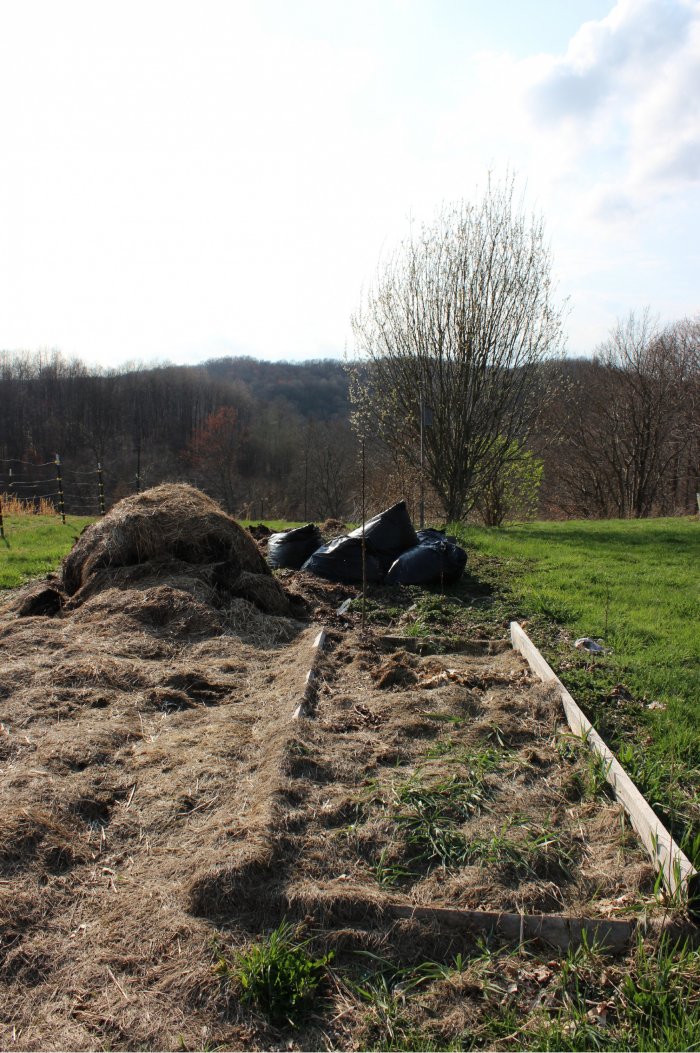Gardening Methods
All life on this earth depends on healthy soil. Period. If the soil can not grow plants, life ends. So I use gardening practices that support healthy soil. I do not till. Tilling has become such a common practice we just blindly accept it and even think it’s a necessary part of gardening. Tilling is, in fact, very destructive. The top soil layers are quite fragile and complex. Disturbing and mixing those layers decreases fertility and nutrient availability while increasing erosion and soil loss. I garden with as little soil disturbance as possible. In addition to using “no-till” methods, I use cover crops and green manure. These function as living mulch, replenishing the soil and minimizing weeds while keeping soil in place and reducing erosion. The beds I use for spring and fall planting have a green manure cover crop planted during the summer, for example. Then this crop gets gently folded into the soil and left to compost. It is necessary for soil health that soil never be left naked. Nature never leaves bare soil exposed to the elements; neither should we.
Life is very busy, especially with five kids. I have experimented a whole lot with compost over the years. What I have found to be sustainable for me is what takes the least effort. The chickens (and sheep, the sneaky buggers) get most of our kitchen scraps. I leave out any meat products (which usually go to the dog and cats), as they can attract unwanted wild animals. I also leave out avocado rinds and citrus peels, since no one eats those and they take a very long time to decompose in the pasture (and avocado can be used for dyeing fiber!). Everything else is fair game and relished by the livestock. So our kitchen waste is converted into eggs and fiber. It’s a wonderful system. But the garden needs fertility added as we harvest foods and remove fertility. I like to compost in place. I gather bagged leaves from towns and put those on the garden to overwinter. This is exactly what nature intended. A healthy forest always has a decomposing layer of leaf litter. It feeds the soil and provides homes for countless microbes and invertebrates. It’s a delicate, complex, amazing system. In addition to leaves, I spread old hay and grass clippings as we have them. I also use soiled bedding from the barn and chicken coop and let those compost in place on the gardens. Compost purists try to balance wet and dry materials, as well as turn and water the compost regularly, maintaining ideal moisture and temperature levels. My system is not ideal, but it’s do-able in the chaos of every day life. Any organic matter I can get to rot on the garden, I see as advantageous.
I have used raised beds for years and love them enormously. I make them from wood scrap pieces. If using purchased lumber, be sure not to get treated lumber. Yes, the wood will last longer and not rot, but there is some chemical leaching and you don’t want those chemicals in your food. If you must use treated lumber, line it with a trash bag or some other plastic layer to keep the chemicals out of your growing soil. I like my raised beds no more than three feet wide, so I can easily reach to plant from either side. Raised beds help reduce soil compaction – mine are especially helpful in giving kids and pets a clear “don’t walk here” zone. If not using raised beds, be sure to establish regular walkways and not to have foot traffic through your growing area. The raised beds give me a clearly defined space to apply my organic materials to compost in place.
I’m learning that the stereotypical vision of a “perfect” manicured garden full of weed free rows is very undesirable. It is very harmful to the environment and soil, through tilling, herbicide usage, run off, compaction and so much more. A healthy garden tends to be messy. It has weeds, which are often native edibles! It supports all sorts of life, not just our desired vegetable plants. And, most importantly, it feeds the soil, so the soil can feed all life.
|
 |

